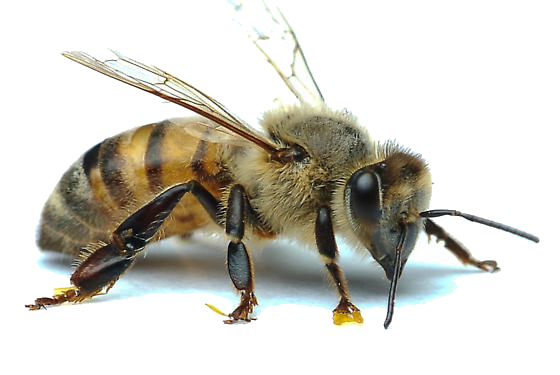We lost Andreas Kappes, to a bee sting. Sad news, indeed, to lose one’s life because of a seemingly innocuous event. One wonders how many people are unaware that they would have such an adverse reaction and whether you might consider it worthwhile doing a follow-up piece on how to deal with a bee sting. After all, we cyclists have a fair amount of skin exposed, so here’s some things to consider if you suffer a bee sting when riding your bike, writes our reader, Bill Danson.

I haven’t found any mention in print of the kind of bee that stung Andreas but as regards the common honey bee, I offer the following information I learned from attending a beekeeping course run by the late Ted Hooper, author of the standard reference book, “Guide to Bees and Honey“. Of course, you may already be aware of all of this.
The honey bee normally encountered in the open air is a female, the larger males (drones) just hang around the hive waiting in case a new queen should emerge in order to mate with her.
If the female feels threatened her instinct is to sting. A typical instance, especially for beekeepers, is if she lands unnoticed on one’s arm on the inside of the elbow and the arm is then bent, trapping the bee. Unless the beekeeping suit being worn is made of suitable material a sting will be felt.
A bee can sting humans only once because the barbs on the sting prevent it from being withdrawn and the bee will die because as it flies away, the sting, together with the attached muscles and venom sac are ripped out of its body and remain in the skin – and this is the crux of the matter; left untouched the muscles remain flexing, driving the sting deeper and pumping more venom into the body.
If the person stung tries to remove the sting by pulling it out, the venom sac will be compressed by the fingers trying to pull the sting out, thus pumping all the venom into the body.
What one should do as soon as possible is scrape the sting out using eg. a long finger nail, the edge of a credit card or knife, held at an angle like a razor shaving. Get someone else to do it if the sting is unreachable to oneself.
If one thinks that a bee has flown into one’s hair, the thing to do is squash it immediately by a smack of the hand. The bee has barbs on its legs which are there to pick up pollen as it crawls over the stamens of flowers to get to nectar but these barbs prevent the bee from extricating itself from our hair and it will consequently feel threatened and begin stinging. It will soon reach one’s scalp where the sting will be inflicted. It is possible to remove the bee with a comb but who carries one of those on a bike ride these days?
A tip fellow cyclists gave me when I lived in Alicante was if I got stung whilst riding by the orange groves, take some of the dark red soil from the grove, mix it with some saliva and rub it on the site of the sting to alleviate the pain and irritation. It happened just once but I tried the remedy and it seemed to work. However, there was no sting embedded in my skin so it seemed I only got a flick of it.
I once rode with my son along the side of a nearby valley when the orange trees were in full bloom and for half a kilometer we rode through thousands of foraging bees going to and fro from their hives on the mountainside to the trees in the valley. We kept our mouths shut and trusted the bees ability to navigate around us and didn’t get stung.



